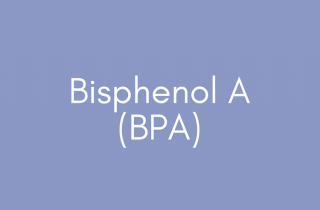Food Packaging
At a Glance
Chemicals of concern to human health and the environment used in food packaging and processing routinely migrate from food and beverages into people’s bodies.
BCPP works to strengthen federal and state regulations of the chemicals used in food packaging and processing, and to make business practices and standards safer, to reduce our exposure to harmful chemicals linked to breast cancer.
Overview
Sources of Toxic Chemicals in our Food |
|
| Environmental contaminants | Air, soil, water |
| Direct food additives | Chemicals intentionally added to food like flavors, colorants or preservatives |
| Indirect food additives | Chemicals migrating into food from any material that food contacts between harvest and mouth. This includes materials used in upstream processing like conveyor belts and tubes, packaging materials, and food cooking and service ware. |
Science summary
Little or no publicly available scientific data attests to the safety of many of the thousands of chemicals currently used in food packaging. And even less data is available on the effects from the combinations of or the cumulative exposures to multiple chemicals coming from food packaging and processing. In the USA, it is estimated that around 5,000 chemicals are used in processing and packaging materials and around 5,000 are used as direct additives. Over 200 chemicals on the FDA permitted lists have already been identified as hazardous and another 530 would qualify for official hazard classification based on predictive hazard data.[1]
Chemicals linked to breast cancer used in food packaging and processing include BPA and other bisphenols, phthalates, PFAS ‘forever chemicals, vinyl chloride and styrene. For some of these chemicals, like BPA, the body rapidly clears them (i.e., metabolizes and excretes them). This means that when those chemicals are replaced with safer alternatives in food packaging or processing, the levels of these chemicals in people quickly go down. However, other chemicals linked to health harm are more persistent, meaning the body takes longer to clear them, or that they don’t break down quickly in the environment. The result is that people are exposed to these chemicals longer or repeatedly, even once manufacturers replace them with other chemicals, putting people at greater risk of negative health effects.
Read More
BPA (Bisphenol-A)
BPA is an endocrine-disrupting chemical (EDC) used in the lining of many food and beverage cans. Studies show that BPA can leach from the lining of cans into food, and then into people. Data from the U.S. Centers for Disease Control and Prevention (CDC) indicate that 93% of Americans have detectable levels of BPA in their urine. Although it has been largely phased out from use in food packaging, it remains in some products, and has recently been found in nonstick pan linings.
Read More
Phthalates
Phthalates are also EDCs that can be found in some plastic food containers, and in jar and bottle cap lids (gaskets). It can also be found in paper and paperboard packaging from the inks, lacquers and adhesives of the recycled pulp used to make these packaging articles. Phthalates are also used in upstream processing materials like tubing and conveyor belts. Multiple studies have shown that removing BPA and phthalates from food packaging can result in a rapid decrease in the levels of these chemicals in people. A study conducted by BCPP and the Silent Spring Institute found that three days of a fresh food diet resulted in an average decrease of 66% in BPA levels and 50% in phthalate levels.
Read More
PFAS ‘forever’ chemicals
PFAS “forever” chemicals (i.e., per- and polyfluorinated chemicals) are a large group of chemicals with health concerns ranging from cancer and hormone disruption to fertility and immune system impairment. They are used in paper, paperboard, and molded fiber packaging to confer oil, grease, and water resistance. Sometimes, PFAS chemicals are present in paper and plastic packaging because they are used as production lubricants or ‘mold release’ agents. Currently the federal government allows a certain number of PFAS for food packaging, but packaging may have additional PFAS chemicals, because the permitted ones can break down into other forms of . These chemicals are persistent: they break down extremely slowly in the environment, and they are found throughout the world in humans and other animals, as well as in our food supply.
Read More
Laws & regulations on food packaging & processing chemicals
How chemicals in food packaging and processing are regulated, why it’s a concern, and what we’re doing to change that.
Read More
Harmful food chemicals replaced with mystery chemicals
Unfortunately, companies that replace a chemical of concern typically don’t reveal the new alternative or health and safety data on it. BPA abandonment is an example of this pattern of regrettable substitution, and it applies to the replacement of many different toxic chemicals in food packaging and processing.
Widespread market abandonment of BPA
Our work to educate consumers and policymakers about the dangers of toxic chemicals in food processing and packaging since 2006 through our Cans Not Cancer Campaign, along with emerging science, brought BPA to the forefront of the federal debate on toxic chemicals. As a result of this pressure, manufacturers and retailers have moved toward BPA-free baby bottles, sippy cups, infant formula packaging, and sports water bottles. Learn more about what the Cans Not Cancer Campaign to get BPA out of food cans can teach us about what it takes to change a sector’s go-to toxic chemical.
Ongoing consumer demand for BPA-free and PFAS-free food packaging has driven manufacturers to use replacement chemicals. Companies usually do not reveal the identity of replacement chemicals and sometimes the safety of these chemicals is unknown. The chemical properties of BPA replacements can be similar to BPA. Research suggests that some of these chemicals are also endocrine disruptors. The same concerns about companies secretly substituting other chemicals which are not safer, i.e., the phenomenon called regrettable substitution, also applies to per- and polyfluorinated chemicals (PFAS) in paper-based food packaging. Some of the emerging data indicate that many shorter-chain PFAS chemicals now being used to replace the longer-chained ones may also have negative health effects.
Our 2016 report, “Buyer Beware: Toxic BPA and regrettable substitutes found in the linings of canned food,” written by BCPP in collaboration with leading , revealed the use of a number of troubling BPA alternatives including PVC, which may contain residual levels of the carcinogen vinyl chloride, and styrene acrylates, which can be contaminated with styrene, a mammary carcinogen. Read Our Report
FDA petitions and litigation
BCPP participates with our allies in official FDA procedures called ‘Petitions’ to request changes in policy decisions, as well as lawsuits against the FDA where necessary, to change policies that allow cancer-causing and other harmful chemicals to be used in food packaging and processing equipment. A few examples include:
- 2020 petition to force the FDA to address the cumulative health effect of all chemicals in the diet when allowing new chemicals in food, or in any materials that contact food in processing or packaging
- 2018 lawsuit to force an FDA decision on cancer-causing chemicals in popular foods
- 2017 lawsuit for illegally delegating the FDA’s authority to ensure food safety to food and chemical manufacturers
- 2016 petition to stop the use of harmful ortho-phthalates in food processing and packaging materials
- 2014 petition-turned-lawsuit to ban the use a hormone disrupting chemical in dry-foods processing and packaging
Types: Article



